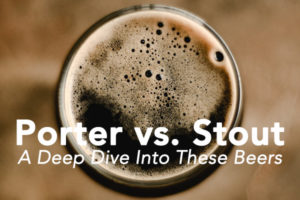The craft beer movement gave birth to many new beer styles. The movement’s inventiveness is encouraging. But, it makes it difficult to discern between beers. Especially those with similar characteristics. Keep reading for our detailed explanation of porter vs stout beers.
You’ve tasted a porter or stout at your local brewery. Whether you’re a craft beer devotee or a fan of rich chocolate drinks.
As most people know, porters and stouts are dark, heady, and flavorful. But, few people are aware of the distinctions.
Because there are no legal classifications for each variety of beer…
…understanding the distinction between porters and stouts is, at best, difficult.
With this…
The fundamental distinctions between porter and stout boil down to;
- The handling of the barley used in the brew;
- What the brewer calls it;
- The resulting flavor profiles; and
- The amount of alcohol utilized.
While there are many other types of so-called “black beer,” stout and porter are the most well-known. They’re also known for being pretty hefty and making us feel quite warm when drinking them.
Is there a significant difference between a porter vs stout?
This mystery has been bothering us for a long time. So we decided to investigate and discovered some fascinating information! We’ll share all you need to know about stouts and porters. Whether you’re starting a brewery or just curious about your favorite beer special.
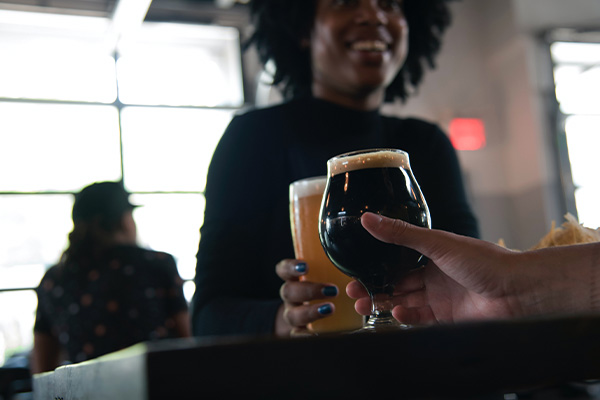
So? What are you waiting for!
Continue reading to learn about the differences between porters and stouts. As well as the various sorts of each and how they came to be.
History of Porter vs Stout
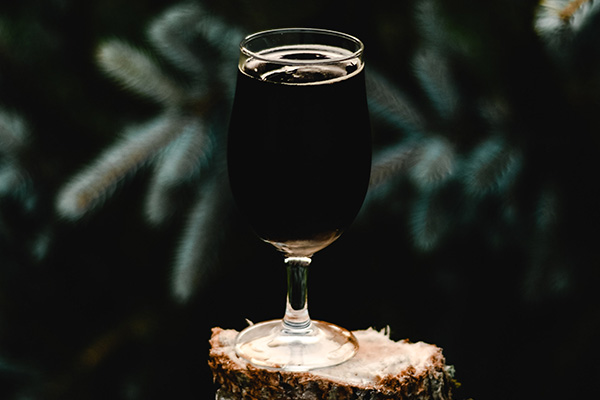
You can see beer consumption in almost every country. It has been consumed since 9500 BC. Alongside water and tea, it is one of the most popular drinks enjoyed by people of all ages worldwide.
In terms of porter…
Porter is a dark-colored beer created from roasted dark malts. It started in London in the early eighteenth century. It was given that name by the London porters who used it on the streets and rivers.
Yes, you read that right.
Unlike other beers aging in pubs or by dealers, this was the first beer to age in the brewery.
As the appeal of strong beer faded over time, porter was made gentler by lowering the original gravity (OG).
Furthermore…
Porter is now produced in many different types in various regions of the world. Chocolate, vanilla, honey, and bourbon porters are among the options.
Ireland was the first country to produce their porter. Porter evolved its variants in other countries, including Russia and Finland.
Also…
Stout is a dark beer produced with roasted malt or barley, hops, water, and yeast.
It’s a term for the strongest porter. Which has a sweet stout flavor and has a larger percentage of hops than other porters.
Here’s the deal!
The term “stout” was coined in the 1670s to refer to a robust, dark beer. It was derived from the Old French word “estout,” which meant “proud and strong.” In fact, its original name was “stout porter.”
Moreover…
It was later used to refer to any beer with a flavor. However, it is most closely connected with strong-flavored porters. And the two are now used interchangeably.
In a nutshell…
A stout is a variation of the porter. This became popular in 18th-century England when dark beers were popular.
Brewing
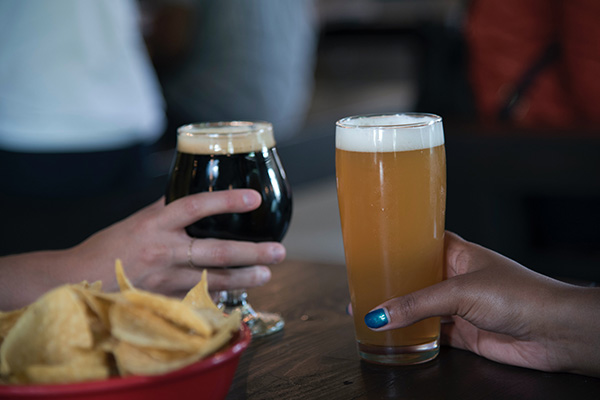
You can brew Porter using malted barley, though some use unmalted roasted barley. Porter often uses lighter grains of barley.
Stout is from unmalted roasted barley. It gives the beer a roasted, almost coffee-like flavor and a dry bitterness. Stout is often made with the darkest grains of barley.
Related article: What Is Mead? Everything You Always Wanted To Know
Taste
Porter is more flavorful than stout. The amount of black grain in a porter determines whether the beer is sweet or spicy and bitter. It is also affected by the malt and hops used.
Porter, in general, does not use roasted barley, though some do. When it does, lighter-colored barley is often used. Stout contains stronger roasted overtones than porter. It has a dry, bitter taste due to roasted, darker barley.
To summarize…
Stouts taste roasted, bittersweet, and coffee-like. Porters are dark brown ales brewed with chocolate malts or specialty malts. Porters have a stronger chocolaty flavor. Stouts often have a coffee-like flavor.
Color
The color of stout and porter beers varies slightly. Porters are light to dark brown, and stouts are dark brown to black. Porters, often known as brown ales, are lighter in the body than stouts. The stout is typically opaque and jet black in appearance.
ABV
A porter typically has 4-6 % ABV and a modest IBU (International Bitterness Units) level. Stouts are priced similarly, although they tend to be more alcoholic and have a higher IBU count.
Ultimately…
You can determine the ABV of the beer by knowing first the brewer and the porter or stout subtype.
So…
When choosing between a porter and a stout made by the same brewer, the stout is likely to be more alcoholic.
However…
These conventions are likely to be ignored when comparing one brewer’s porter to another’s stout.
Black Hops and Stouts
Types of Porter
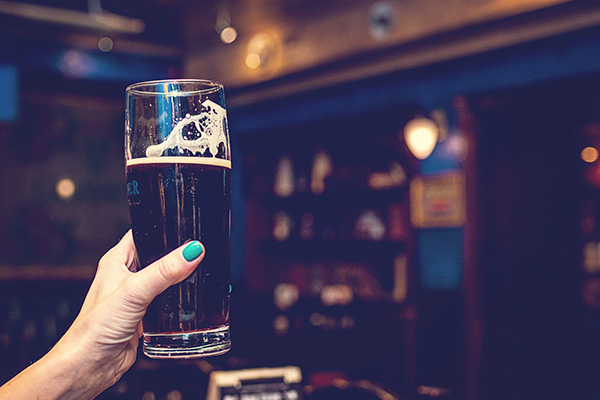
Porters are dark brown ale brewed with chocolate malts, though they can also be made with brown malt, roasted barley, or specialty malts.
You can distinguish porter beer by its dark brown to black color. This is from dark malts and malted barley and leaves a chocolate malt flavor on the palate. All porters (save the Baltic) are dry-hopped and brewed with top-fermenting ale yeast. BBQ and other rich, smoky flavors go nicely with porter beers.
Apart from that…
Porter is the great-great-grandfather of today’s stout. Yes, you read it right!
In most cases, the end product is black with a balance of malty dark ale sweetness, and sharp hoppiness.
American Porter
American porters have cocoa and coffee overtones. It also has crisp and strong malt characteristics. The hue is dark brown to black, with a pronounced hoppy scent and a dry finish.
American porters have ABV levels of 10% or higher. American porters are darkly roasted, extensively hopped, and intensely bitter.
Moreover…
It’s normally towards the darker end of the brown spectrum. Also, while this style appears black, it’s shot up with ruby and mahogany accents when held up to the light.
When discernible, clarity should be good. It should have a full mocha-colored head with medium to moderate good head retention.
Furthermore…
The American Porter is a good place to start for a new brewer. But, it has enough depth to entice the seasoned homebrewer looking for a new type to play with.
Whether you’re looking through the ever-expanding list of commercial samples or brewing a batch to share with friends…
…the American Porter is a fantastic style to spend some time with.
And what about my impression?
It’s a big, malty black beer with a deep and tasty dark malt flavor.
Brown Porter
An English porter is also another term for a brown porter. This ale has a mild to medium hop bitterness. It has no roasted barley flavor characteristics. This imparts a nutty, bready malt flavor to the porter.
These ales contain less alcohol by volume than ordinary porters.
Furthermore…
There is neither roasted barley nor a significant black malt flavor in the brown porter. It contains a mild to medium malt sweetness and caramel and chocolate malt. Hop bitterness is moderate. With less alcohol and body, it’s softer, sweeter, and more caramel-like than a robust porter.
Yes! You read that right!
Brown porters have bittersweet chocolate, caramel, and toffee aromas. This is due to their copious malts and minimal hops. Brown porters are lighter-colored porters that often appear medium brown.
Baltic Porter
Baltic Porter is a style of imperial stout that evolved in the Baltic region during the 19th century. This powerful beer is not top-fermented and is technically a lager. Baltic porters have higher alcohol levels. Some characterize its taste as creamy or toasted.
Baltic-style Porter is a smooth, cold-fermented, and cold-lager beer made with lager yeast. Baltic porters get their high alcohol concentration from the lager yeast. It also has the characteristics of a London Brown Ales.
Here’s how it works:
English brewers develop this type out of need. They laced their porters with more alcohol. This is to prevent spoiling during transport to the Baltics.
Also…
These beer styles are also known as ‘Imperial Porter’ by others. The English also exported it to Catherine II of Russia’s court.
Fans of Baltic porter beer enjoy the flavors of cocoa, almonds, and coffee.
Moreover…
They often taste cocoa, coffee, nuts, and chocolate. This also has relatively high alcohol concentrations ranging from 6.5 to 9.5 percent ABV.
Robust Porter
A robust porter with bitterness and roasted malt flavor falls between a brown porter and a stout. It’s because of roasted malts and the absence of roasted barley. The high alcohol concentration, hoppy bitterness, and caramel sweetness characterize robust porters.
Furthermore…
The Robust Porter has a stronger bitter and roasted malt flavor than a brown porter but is not as strong as a stout. It has a cocoa flavor to it but no taste of roast barley. The intense bitterness of black malt complements their caramel and malty sweetness.
Types of Stout
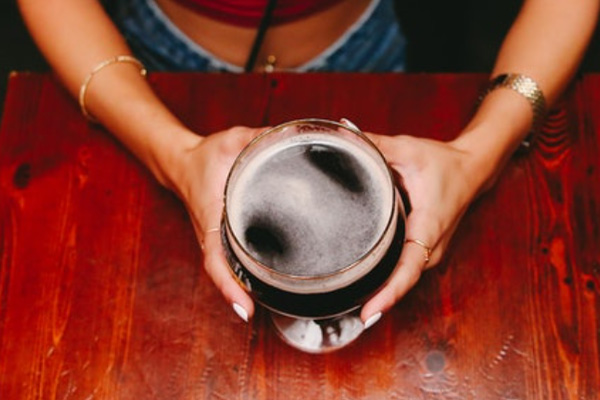
You can distinguish Stout beer by its dark to black color. You can also recognize it for its roasted coffee and dark chocolate flavors. Mild ales are stronger variants of stouts. Stout beers get their color and flavor from unmalted roasted barley.
Fun fact!
Did you know that the stouts were first called “Stout Porters!”
Going back…
Dry hopping stouts reduce hop scent, and many brewers use liquid extract bittering hops. Because stout beers are so dark, it’s difficult to see how clear they are.
However…
The majority of stout types are opaque, but they develop a cool haze at low temperatures.
American Stout
American Stout is one of the most recognizable classics of the American beer market. Stout beer is about as dark as an American beer can go, with a distinct scent, flavor, and appearance.
When it comes to its taste…
The scents and flavors of roasted malt are more prominent in American stout. In certain cases, it’s practically burnt coffee-like compared to all other beer styles. Its trademark flavor and black color come from American hops and large amounts of dark malts.
Irish Stout
Dry-roasted stouts with rich, black color and a robust malt flavor are Irish stouts. Irish stouts feature a thick mouthfeel and rich, creamy tastes. It features a medium to high hop bitterness, a little acidity, and a dry, roasted coffee flavor.
Due to the usage of roasted barley, Irish Dry Stouts are dark beers with a dry-roasted flavor. It had a lot of roasted barley and not much-roasted malt.
Imperial Stout
Imperial stouts are malty and sweet, with low to medium carbonation and a sweet malt aroma. They are one of the more flavorful and bolder forms of stout with undertones of acidity and sweetness.
Russian imperial stouts are drier and maltier, whereas American imperial stouts are hoppy with a burnt coffee flavor.
To put it in simple terms…
“Imperial” refers to a bigger, fuller-bodied version of the base kind of beer. Imperial Stouts have higher alcohol content. It has more pronounced roast, caramel, chocolate, and smoke flavors than its counterparts.
Oatmeal Stout
Oatmeal stouts have a fuller body and a sweeter flavor than other stouts. It has a little number of oats in the grain blend used to manufacture the beer.
Or you could say…
The sweetness of oatmeal stout comes from a combination of oats and chocolate, and caramel malts. Other stout variants’ coffee essences are replaced with a nutty oat flavor in this stout.
Furthermore…
Oatmeal stouts don’t have a distinct oat flavor.
However…
Oats provide a well-known smoothness because of their high protein, fat, and gum content. The gums give the beer more body and viscosity. Both the oatmeal and the roasted barley are unmalted grains.
Pastry Stout or Sweet Stout
Pastry stouts incorporate ingredients such as baking spices, vanilla, and chocolate. This is to enhance the natural roasted sweetness of stouts. Some craft brewers take the term “pastry stout” to its logical conclusion. Brewing their stouts with genuine pastries and sweets.
To sum it all up…
A pastry stout tastes like a boozy dessert.
Milk Stout
Milk stouts feature a slight sweetness that contrasts with the inherent bitterness of the stout beer category. This is because they are brewed with lactose (milk sugar). These lactose doesn’t ferment when exposed to beer yeast.
Barrel-Aged Stout
A powerful stout aged in whiskey barrels is known as barrel-aged stout. The oaky aromas from the whiskey barrels enhance the stout’s headiness.
Conclusion: Porter Vs Stout
Because porters and stouts are so similar. There is a large overlap between the two types. This is due to their lineage.
However…
The type of malt used in brewing is perhaps the most significant distinction between the two. Stouts are made mostly from unmalted roasted barley, whereas porters use malted barley. This component handles the coffee-like flavor of stouts. Porters are also lighter and more flavorful than stouts.
Porters and stouts share a lot of characteristics.
Here’s our summary to guide you into it.
| Porter | Stout | |
| Brewing | Malted, light-colored barley is typically used. | Unmalted, dark-colored, roasted barley is typically used. |
| Taste | SweeterLighter TasteLess-Full Bodied | Deeper roasted taste.Coffee LikeDry Bitterness |
| Color | Lighter brown | Dark brown to Black |
| ABV | 4-6% | 4-6% |
| Origin | London | London |
To conclude…
To share with you my favorite porter, here’s a guide to making your own Deschutes Black Butte Porter!
If you enjoy one, you’ll probably enjoy the other as well! The easiest way to compare and contrast is to grab a friend and get one of each.



